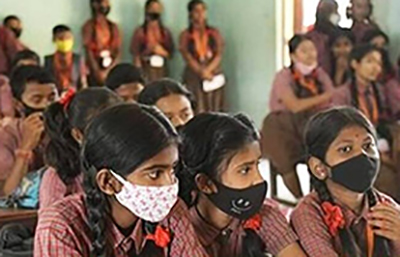Relevance: GS-2: Issues Relating to Development and Management of Social Sector/Services relating to Education.
Key Phrases: deep learning crisis, NAS 2021, build a skilled and intellectual workforce, poor children lacking basic foundational skills, bridge courses are like additive process, how to make schools more responsive to children and their needs, a positive influence on the teacher-student relationship, a child-first approach;
Context
- The COVID pandemic has caused a deep learning crisis in the country.
- Recently, National Achievement Survey (NAS) 2021 was published.
- As per this, the performance of students in subjects ranging from maths to social science has fallen by 9% points (from 2017 to 2021).
- This learning loss must be analysed across different sub-indicators to chalk out a plan to cover up the loss and build a skilled and intellectual workforce.
Key Highlights of the article
- The reason behind learning loss
- Absence of a formal, structured learning environment
- The learning loss seems to be more applicable to those children who do not have educational support at home.
- Also, due to other constraints, educational attainment could
have been affected:
- Children would have to help their parents in earning household income.
- Children would have lost close ones to the pandemic.
- Absence of a formal, structured learning environment
National Achievement Survey (NAS) 2021
- It is conducted by the Ministry of Education.
- It was designed by NCERT and the evaluation administrator for the survey was CBSE.
- It was conducted across 1.18 L institutions comprising State Government schools, Government Aided Schools, Private Unaided Recognized Schools, as well as Central Government schools.
- The sampled schools were chosen using UDISE+ 2019–2020 data.
- The tests were conducted across classes 3,5,8 and 10.
- Observations
- The national average scores of students across subjects have dropped by approx. 47 marks (vs 2017).
- Rural Areas have performed below their urban counterparts in the same state.
- Learning outcomes of students from SCs/ STs/ OBCs have remained below that of students from the General category.
- The average performance of girls remained better than the boys in almost all subjects across the classes, both nationally and at the state level.
- 78% of students termed learning during the pandemic as burdensome due to overburdening of assignments.
- 24% of students declared that they didn’t have any digital means to continue education.
- Most of the states and UTs have performed below the national average, except Delhi, Kerala, Punjab, Rajasthan and Maharashtra.
- The NAS is the 1st nationwide survey of quality education after the lockdown and extended closure of schools. Therefore, its results assume greater significance.
Gaps in NAS and its repercussions
- Conventional way of measuring the learning outcome
- The meanings of learning, pedagogy, and peer interaction have changed with the shift to the online mode.
- But, the assessment tools continue to be centred on the offline mode of instruction.
- Labelling a section of children as “weak”
- This causes further disillusionment in students causing a loss of interest in academics.
- It doesn’t factor in new skills and relevant knowledge that a student
might have learnt during the pandemic.
- The current format validates certain kinds of learning which take place in the classroom and exclude all other experiences outside it.
- Students have been exposed to parental work, household chores, gardens, forests and other natural environments around them.
- Related to this is the narrative of poor children lacking basic foundational skills.
- Dilution of the meaning of learning
- Rote learning is promoted and the assessment restricts itself to a fixed curriculum which tests memory more than knowledge.
- Remedial programs like bridge courses are based on an
understanding of learning as an additive process.
- As per this, the learning loss can be recovered by increasing either the content intake or the instruction time.
- There is an assumption that learning manifests itself easily
irrespective of who is evaluating and under what circumstances.
- Lack of sufficient care to understand how children relate to the assessment exercise.
Way Forward
- It is important to know what students may have experienced/acquired in
this period.
- Apart from knowing what children do not know, it is important to know what they have learned.
- As different students are now at different educational levels, a
differential approach is required to curb the learning loss.
- Hence, instead of asking how to make children ready for school, a more valid question to ask perhaps would be how to make schools more responsive to children and their needs.
- Schools must have provisions for students to express themselves
regarding losses suffered and learnings undertaken by cultivating safe
spaces.
- Providing such spaces would be very critical in processing grief.
- This should become part of the school culture.
- This will allow children to reclaim their spaces in the classroom.
- Well-being of teachers must be ensured
- Only by involving teachers in the right way can the confidence of students in the education system can be rebuilt and the learning experience can be made fun and engaging.
Conclusion
- These measures will have a positive influence on the teacher-student relationship and help bridge the trust deficit that has been created by long school closures. But the process must start by adopting a child-first approach in essence.
Source: Indian Express
Mains Question:
Q. What is learning loss? How does National Achievement Process measure this? What are the challenges in this system of measurement? Suggest a suitable way forward.








